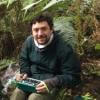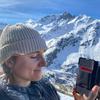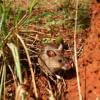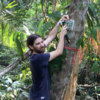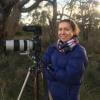Acoustic sensors enable efficient and non-invasive monitoring of a wide range of species, including many that are difficult to monitor in other ways. Although they were initially limited in application scope largely due to cost and hardware constraints, the development of low-cost, open-source models like the Audiomoth in recent years has increased access immensely and opened up new avenues of research. For example, some teams are using them to identify illicit human activities through the detection of associated sounds, like gunshots, vehicles, or chainsaws (e.g. OpenEars).
With this relatively novel dimension of wildlife monitoring rapidly advancing in both marine and terrestrial systems, it is crucial that we identify and share information about the utility and constraints of these sensors to inform efforts. A recent study identified advancements in hardware and machine learning applications, as well as early development of acoustic biodiversity indicators, as factors facilitating progress in the field. In terms of limitations, the authors highlight insufficient reference sound libraries, a lack of open-source audio processing tools, and a need for standardization of survey and analysis protocols. They also stress the importance of collaboration in moving forward, which is precisely what this group will aim to facilitate.
If you're new to acoustic monitoring and want to get up to speed on the basics, check out these beginner's resources and conversations from across the WILDLABS platform:
Three Resources for Beginners:
- Listening to Nature: The Emerging Field of Bioacoustics, Adam Welz
- Ecoacoustics and Biodiversity Monitoring, RSEC Journal
- Monitoring Ecosystems through Sound: The Present and Future of Passive Acoustics, Ella Browning and Rory Gibb
Three Forum Threads for Beginners:
- AudioMoth user guide | Tessa Rhinehart
- Audiomoth and Natterjack Monitoring (UK) | Stuart Newson
- Help with analysing bat recordings from Audiomoth | Carlos Abrahams
Three Tutorials for Beginners:
- "How do I perform automated recordings of bird assemblages?" | Carlos Abrahams, Tech Tutors
- "How do I scale up acoustic surveys with Audiomoths and automated processing?" | Tessa Rhinehart, Tech Tutors
- Acoustic Monitoring | David Watson, Ruby Lee, Andy Hill, and Dimitri Ponirakis, Virtual Meetups
Want to know more about acoustic monitoring and learn from experts in the WILDLABS community? Jump into the discussion in our Acoustic Monitoring group!
Header image: Carly Batist
No showcases have been added to this group yet.
I am a herpetologist interested in bioacoustics, evolution and conservation biology. Currently, I am a postdoc fellow at Universidade Federal de Santa Maria (UFSM), Brazil.
- 0 Resources
- 0 Discussions
- 5 Groups
- @Harsha
- | He/Him
I am a marine biologist / acoustic ecologist from Australia. Fascinated by bioacoustics, I always look forward to learning from people in conservation!
- 0 Resources
- 0 Discussions
- 11 Groups
Alberta Biodiversity Monitoring Institute (ABMI) & SENSR
We track changes in wildlife and their habitats in Alberta, working collaboratively to provide ongoing, relevant, scientifically credible information.


- 2 Resources
- 0 Discussions
- 4 Groups
Holder of BSc in Applied Zoology. Assistant Ecologist at Ruaha National park.


- 0 Resources
- 7 Discussions
- 12 Groups
- @Martincho
- | tincho
Instituto de Ecorregiones Andinas (INECOA)
Postdoc at Instituto de Ecorregiones Andinas (INECOA - Jujuy National University - CONICET).
- 0 Resources
- 1 Discussions
- 2 Groups
University of Zurich
PhD student at the University of Zürich (CH) in PopEcol group, working with camera traps and mammals
- 0 Resources
- 0 Discussions
- 8 Groups
- @fsattar
- | Farook
Farook Sattar received his Technical Licentiate and PhD degrees from Lund University, Sweden. He obtained his B.Eng and M.Eng degrees from Bangladesh University of Engineering & Technology (BUET), Dhaka in Electrical and Electronics Engineering.
- 0 Resources
- 0 Discussions
- 2 Groups
University of Antwerp

- 0 Resources
- 12 Discussions
- 7 Groups
- @sarah_dalrymple
- | she/her
Royal Society for the Protection of Birds (RSPB)

- 0 Resources
- 9 Discussions
- 3 Groups
- 0 Resources
- 2 Discussions
- 3 Groups
British Trust for Ornithology (BTO)
- 0 Resources
- 11 Discussions
- 1 Groups
- 0 Resources
- 0 Discussions
- 4 Groups
Ol Pejeta Conservancy partners with conservation and technology organisations to kick-start a research and innovation centre for wildlife conservation
31 May 2019
In February, we released an open call for the WILDLABS TECH HUB, offering 3 months of support for solutions using technolgy to tackle the illegal wildlife trade. We were overwhelmed by an incredible 37 submissions,...
13 May 2019
Happy World Wildlife Day! To celebrate, this week we've asked our community to share photos showing how they are using tech in the field or the lab, using the #Tech4Wildlife hashtag.
3 March 2019
In this case study, Science Reporter Jamie Morton tells the story of how Kiwi scientists are teaming up with a local underwater robotics company to gain world-first insights into the lives of whales in Antarctica.
4 February 2019
As human impacts on the world accelerate, so does the need for tools to monitor the effects we have on species and ecosystems. In this article, Ella Browning and Rory Gibb share insights from their recent review paper...
4 December 2018
Article
In this case study, conservation ecologist Ayesha Tulloch takes us behind the scenes of her recent paper, which came out in Nature Ecology & Evolution earlier this month. In this paper, Ayesha and her team present a...
20 August 2018
Last month, the 2018 Ecoacoustics Congress was held in Brisbane. Bringing together scientists, natural resource managers, industry and artists, participants explored the ways that sound can deepen our understanding of...
25 July 2018
This latest chapter in the Conservation Technology Series from WWF-UK looks at the opportunities, challenges and state-of-the-art of satellite remote sensing for conservation applications. This issue reviews available...
23 April 2018
Hundreds of people joined our #Tech4Wildlife photo challenge this year, showcasing all the incredible ways tech is being used to support wildlife conservation. We've seen proximity loggers on Tasmanian Devils in...
3 March 2018
Our panel of international experts has been hard at work reviewing the 47 proposals we recieved for innovative technological tools to address human wildlife conflict. The panelists have systematically been assessing the...
20 October 2017
The inherent complexity of not only deploying technologies in the field but also doing so in a scientifically rigorous manner can prove a substantial barrier for the effective use of conservation technologies, and clear...
11 October 2017
Its been a busy couple of months for the Open Acoustic Devices team. They've just returned back from Belize where they have been trialling the new AudioMoth design for gunshot detection. Find out what they've been up to...
27 June 2017
August 2025
event
September 2025
event
October 2025
November 2025
event
November 2023
event
event
64 Products
Recently updated products
| Description | Activity | Replies | Groups | Updated |
|---|---|---|---|---|
| Fascinating article, combining machine learning and acoustical signals to correlate coral reef health.https://www.sciencedirect.com/science... |
|
Acoustics, AI for Conservation, Marine Conservation | 3 years 2 months ago | |
| My name is Frank Short and I am a PhD Candidate at Boston University in Biological Anthropology. I am currently doing fieldwork in Indonesia using machine-learning powered passive... |
|
Acoustics, AI for Conservation, Animal Movement, Data management and processing tools, Early Career, Emerging Tech, Ethics of Conservation Tech, Protected Area Management Tools, Software Development | 3 months 1 week ago | |
|
|
Latin America Community, Acoustics, AI for Conservation, Camera Traps, Drones, Early Career | 3 months 2 weeks ago | ||
| There are a lot of parameters in principle here. The size of the battery. How much time in the field is acceptable before a visit? Once a week? Once a month? How many devices you... |
|
Acoustics | 3 months 2 weeks ago | |
| Hi Tom! I think the furry windjammer must be outside the casing to have the desired effect. It can be a bit tricky having this nice furry material that birds and other critters... |
|
Acoustics | 3 months 2 weeks ago | |
| Hi Lana,"similar field setup" means that the vocalizing animal should be surrounded by the recorders and you should have at least 4 audiomoths recording the same sound, then the... |
+9
|
Acoustics | 3 months 2 weeks ago | |
| New stable release : v1.5.1We are pleased to announce the latest release with several important enhancement, fixes and documentation improvements to ensure compatibility with the... |
+15
|
Acoustics, AI for Conservation, Open Source Solutions, Software Development | 4 months ago | |
| Hello everyone,Thank you all for your contribution!You can read some updates about this project in this post.Julia |
|
Acoustics, Community Base, Data management and processing tools, Open Source Solutions | 4 months 1 week ago | |
| Hi all, I'm Vainqueur BULAMBO. I'm looking for a fully funded PhD opportunity in ecological data science or conservation... |
|
Acoustics, AI for Conservation, Autonomous Camera Traps for Insects | 4 months 1 week ago | |
| Really looking forward to following this project. I'm very curious how you'll be able to tease out different species, particularly among species that feature a variety of worker... |
|
Acoustics, AI for Conservation | 4 months 3 weeks ago | |
| Yep see you on friday |
+3
|
Geospatial, Acoustics, AI for Conservation, Camera Traps, Citizen Science, Community Base, Data management and processing tools, Emerging Tech, Open Source Solutions, Protected Area Management Tools | 4 months 3 weeks ago | |
| Hi Danielle, A friend of mine was having a fellowship at K Lisa Yang Center and she successfully built a classifier for Javan Slow Loris. So far I only heard she only made... |
+8
|
Acoustics | 4 months 4 weeks ago |




